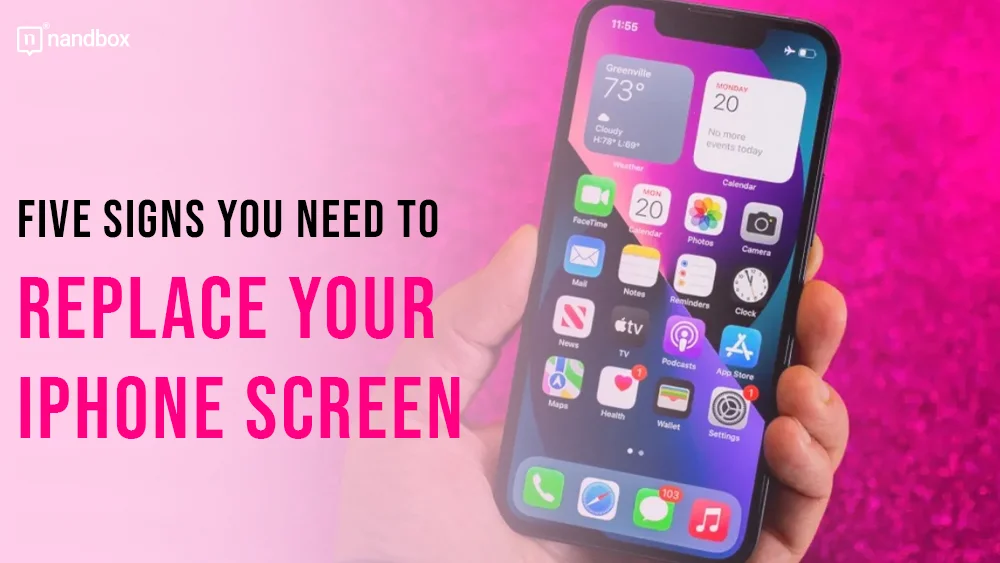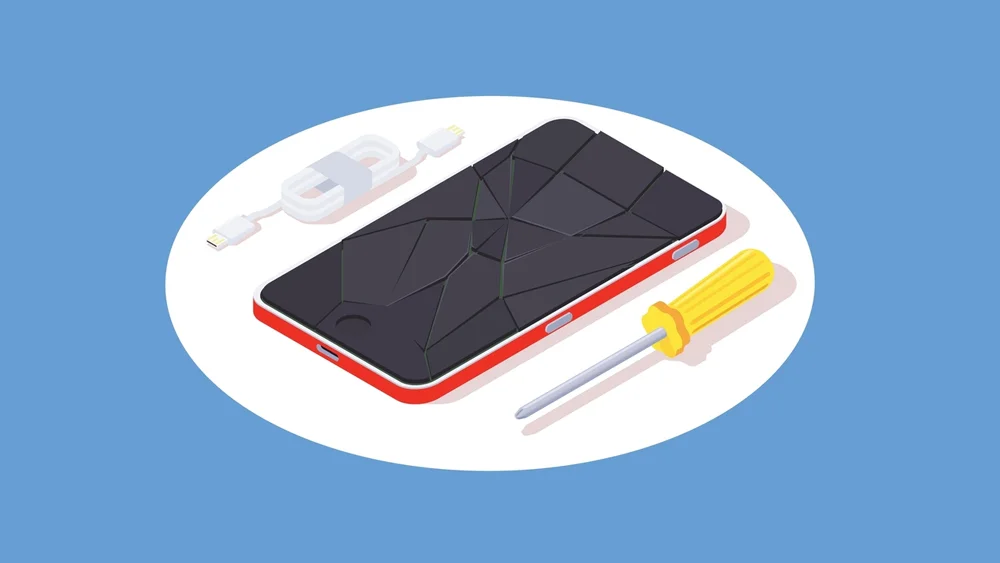Smartphones have revolutionized how people communicate, work, and entertain themselves. Among these, Apple’s iPhone stands out as a symbol of innovation and consistency, boasting cutting-edge technology that enhances daily life. But replacing these phones’ screens often becomes hectic for folks.
Recognizing when to replace an iPhone screen is crucial for maintaining optimal performance and usability. By identifying specific indicators early on, users can proactively address potential issues, ensuring their devices meet their daily needs without interruption or frustration. Below, we delve into five definitive signs indicating it may be time to seek professional assistance to replace your iPhone screen.
Businesses should prioritize maintaining the performance of their mobile apps with the same level of care that consumers devote to maintaining their iPhone screens. Businesses can develop and maintain mobile apps with the same ease and accuracy using a platform like nandbox, guaranteeing continuous usability and a flawless user experience.
1. Visible Cracks or Chips
The presence of any visible cracks or chips on your iPhone screen is perhaps the most unmistakable sign that it requires replacement. Even minor cracks, seemingly insignificant at first glance, have the potential to worsen over time. Beyond the aesthetic concerns they raise, such as detracting from the sleek appearance of your device, these cracks pose functional risks as well.
One of the most obvious signs that your iPhone screen needs replacement is the presence of visible cracks or chips. Even minor cracks can get worse over time and compromise the screen’s structural integrity. These cracks detract from the device’s aesthetic appeal and can interfere with touch sensitivity and display clarity.
- Visible damage: Look for any cracks or chips on the screen surface.
- Touch sensitivity issues: Check if the touch response is affected around the cracked areas.
- Risk of further damage: Understand that leaving cracks unrepaired can lead to more extensive damage over time.
2. Display Discoloration or Pixelation
If you notice unusual display behavior on your iPhone, such as discoloration or pixelation, it could indicate that your screen needs replacement. Discoloration typically presents as irregular patches of color or a noticeable yellowish tint overlaying the screen. This issue can arise due to damage to the screen’s internal components, causing it to display colors inaccurately or unevenly.
Discoloration and pixelation detract from the iPhone’s visual appeal and hinder user interaction and readability. They may make it challenging to view content accurately, affecting tasks such as reading text, viewing photos or videos, and navigating graphical interfaces.
- Abnormal color patches: Note any areas where the screen displays incorrect colors.
- Pixelated areas: Look for visible pixel blocks or lines on the screen.
- Possible internal damage: These issues may require professional assessment and repair.
3. Touchscreen Unresponsiveness
Maintaining a responsive touchscreen is essential for seamless navigation and usability on your iPhone. When certain areas of the screen become consistently unresponsive to touch or require multiple taps to register input, it suggests potential issues with the screen’s digitizer or underlying circuitry.
Addressing touchscreen unresponsiveness promptly is crucial to restoring the iPhone’s functionality and user experience. Professional diagnosis by authorized repair services can help identify whether the issue lies with the digitizer, underlying circuitry, or software-related factors. Depending on the diagnosis, they may recommend recalibration, repair, or screen replacement to resolve the problem effectively.
- Inconsistent touch response: Test the touchscreen across different areas to identify unresponsive spots.
- Testing apps: Use various apps to determine if the issue persists in specific areas.
- Calibration and repair: Consider professional repair services to recalibrate or replace the digitizer if necessary.
Similar to this, consumer happiness with mobile apps depends on responsiveness. An unresponsive mobile app can turn off users, much like a nonresponsive iPhone screen can be annoying. Businesses have total control over the responsiveness and user experience of their apps thanks to nandbox’s app builder, which guarantees that every tap, swipe, and interaction is seamless and useful.
4. Persistent Screen Flickering
Screen flickering on your iPhone, characterized by intermittent flashes or rapid flickers without user input, is a concerning issue that often points to underlying hardware or software problems. While occasional flickering may be resolved through software updates or adjustments, persistent or worsening flickering typically indicates more significant issues that may require screen replacement.
By addressing persistent screen flickering promptly and accurately diagnosing the underlying cause, iPhone users can maintain a stable and enjoyable viewing experience while ensuring the longevity and reliability of their devices for daily use and multimedia consumption. Taking proactive steps to resolve screen flickering enhances overall usability and preserves the quality of the iPhone’s display.
- Frequency of flickering: Note how often the screen flickers and under what circumstances.
- Impact on usability: Assess whether the flickering affects the everyday use of the device.
- Professional diagnosis: Seek expert advice to determine if screen replacement is necessary.
5. Water Damage Indicators
Addressing water damage promptly is crucial to mitigating potential long-term effects on the iPhone screen and internal components. If you suspect water exposure or notice any signs of water damage, avoid attempting to power on the device and seek professional assistance immediately.
By understanding the water damage indicators and taking proactive measures to protect and maintain their iPhones, users can prolong the device’s lifespan and ensure reliable performance for daily use and activities.
- Visible watermarks: Look for watermarks or moisture under the screen surface.
- Delayed symptoms: Understand that water damage effects may not be immediately apparent.
- Preventive measures: Consider protective cases or water-resistant accessories to minimize future damage.
Maintaining a fully functional iPhone screen is essential for enjoying seamless communication, productivity, and entertainment on the go. Recognizing the signs that indicate a need to replace an iPhone screen is vital to preserving the device’s performance and longevity. By addressing these issues promptly through professional repair services or authorized Apple service providers, users can restore their iPhone screens to optimal condition. This not only enhances user experience by ensuring clear visuals and responsive touch interactions but also protects the device from further damage that could compromise its overall functionality.
nandbox: The Smart Way to Have a Perfect Online Experience
As a functional iPhone screen allows easy communication, entertainment, and productivity, a well-designed mobile app ensures user engagement and happiness. nandbox’s all-in-one, no-code native app builder lets businesses give users the same faultless experience. With nandbox, you can build feature-rich, responsive, and beautiful apps that work smoothly. As important as a well-maintained iPhone screen is, our platform prioritizes stability and user experience. Businesses can avoid user engagement “cracks” and keep apps intuitive, responsive, and up-to-date with nandbox. Just like an iPhone screen repair restores performance, nandbox keeps your app relevant in the ever-changing digital landscape.




